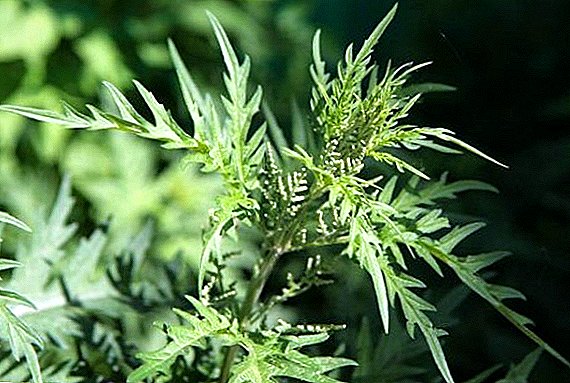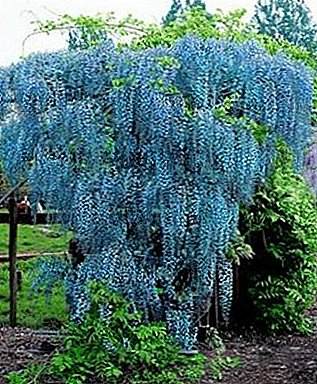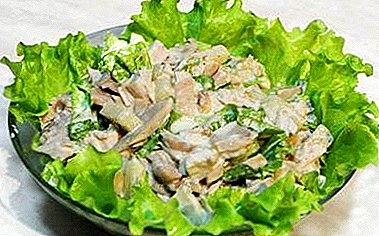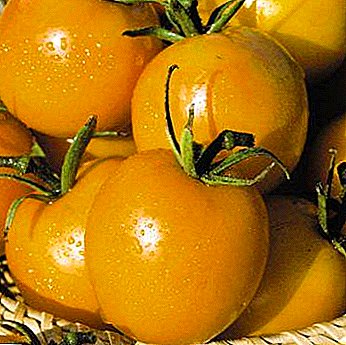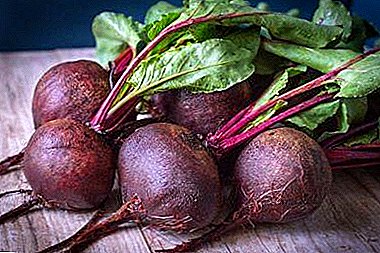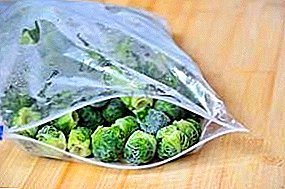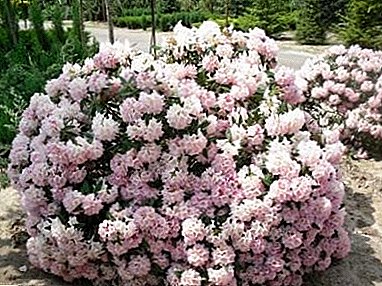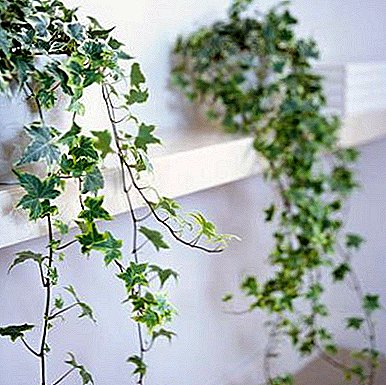
English, or ordinary, ivy - very beautiful room liana. This climbing plant can be used for decorating apartments, offices and other premises.
The interior, where ivy stems and leaves play a big role, is perceived as being close to nature and a bit mysterious.
The leaves are characterized by a bright, intense emerald color, contrasting veins and marble pattern.
Home care
 For a healthy, full of strength plants characteristic bright leaf color, dense skin, flexible and resilient stems. The leaves should be evenly distributed throughout the length of the stem.
For a healthy, full of strength plants characteristic bright leaf color, dense skin, flexible and resilient stems. The leaves should be evenly distributed throughout the length of the stem.
If it seems to you that the leaves grow too rarely or too far from the roots, most likely you need to change the conditions of maintenance and care.
Pruning is also a good way to rejuvenate the plant and give it new strength.
The soil for the plant is usually bought ready. Experienced fans of English ivy often prepare the mixture for the soil themselves. There are many recipes for preparing the soil, but they differ depending on the geographic area and the available natural materials.
Ivy feed is best 50 percent liquid fertilizer for indoor plants. The frequency of feeding depends on the state of the flower, the average value is considered 1 time in 3 or 4 months.
How to take care immediately after purchase?
For this plant choose a cool room, a well-lit place. If it’s a windowsill, make sure the plants are protected from drafts.
Due to the fact that ivy vines decorate the room, a pot with a flower is often placed higher: for human growth, for example. Often this decision is justified, since in this position good illumination is provided. However, it is more difficult to monitor the condition of the plant, soil moisture and leaf color.
Read more about ivy care here.
Pruning
In the middle of spring can be cut too expanded plants. This procedure will only enhance the health and stamina of ivy. The resulting twigs - processes easily root and give rise to new plants.
Watering
Like most plants, the life cycle of ivy is divided into vegetative - a period of intensive growth and a time of rest, or wintering.
In the cold season, watering is minimized, but with an increase in daylight hours, they carefully return to normal.
During the growing season ivy should be watered relatively oftento keep the soil slightly wet.
In the summer, the heat is good spray the plant. Ivy loves moist air and fog, natural or artificial. In addition, in summer, when the windows are open, a lot of dust can quickly accumulate on the leaves. 1-2 times a week is enough to wipe the leaves with clean water using any soft cloth or sponge.
Temperature
 Loves moderate temperatures, feels great in cool rooms.
Loves moderate temperatures, feels great in cool rooms.
Overcooling may indicate the appearance of a light pinkish border around the edges of the leaves.
The recommended range is from +10 to + 18˚С, minimum value + 5˚С.
Lighting
Plant loves enough bright but soft light - scattered, as in the forest or in other natural conditions. The direct rays of the sun are harmful to ivy.
The lack of lighting is reflected in the fact that the leaves begin to lose bright spots and patterns: they turn pale, blur around the edges and gradually disappear. Basically variegated ivy species require more light than monotonous green plants.
If you notice that the pattern on the leaves has lost clarity, move the flower to a dark corner for a day or two, and then put it in a brightly lit place. Light tissues are best protected from the direct rays of the sun; frosted glass or a tissue paper screen can be used.
IMPORTANT! Signs of your ivy feeling unwell may indicate both improper lighting and other problems — for example, improper soil composition or too much watering.
A photo
Photos of English ivy grown at home:




Breeding
The most affordable breeding method at home is with apical cuttings. This method can be practiced throughout the year.
Cuttings root right in the water, then they are carefully transplanted into the ground. It is accepted to pinch the cuttings slightly after planting, then the young plant will branch better.
Detailed guide on growing ivy in different ways read here.
Diseases and pests
Some of the most common pests are: scythes, thrips, red spider mites.
For treatment, leaves are treated with special insecticides. To get rid of the invasion of red mite will allow treatment with acaricide. It should be regularly sprayed them the bottom surface of the leaves.
On how to deal with ivy pests and diseases, read here.
Why does not bloom what to do?
Here are some of the possible problems, their symptoms and solutions.
If the leaves have turned yellow, the reasons may be an excess of moisture or fertilizer.
Tip: reduce watering, prevent overcooling plants. Make sure that the water for irrigation is soft, and its temperature is at room temperature or slightly higher. Adjust the amount of fertilizer in the soil. You may need to transplant the plant.
In the variegated plant, the patterns disappeared or became very pale. Reason: ivy lacks light. Easiest move it to a more illuminated place but in some cases it is recommended to install a special lamp.
 The leaves are too rare, the stems seem to be "bald." The plant does not have enough light. Sometimes it may be the wrong composition of the soil.
The leaves are too rare, the stems seem to be "bald." The plant does not have enough light. Sometimes it may be the wrong composition of the soil.
The tips of the leaves become dry, brown. Insufficient watering, often in combination with too dry air and high temperature in the room.
What to do? Get started often spray the plant. Gradually increase watering. Transfer the flower to a cooler room or adjust the air temperature.
Conclusion
Ivy ordinary - indoor flower, which can be grown on open ground. Caring for him does not require much time, and breeding him at home will give you many joyful minutes. Beautiful adult plants look great on walls and windows near mirrors and various decorative items. Any interior, where ivy has a prominent role, will look stylish and mysterious.


